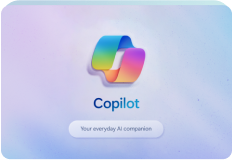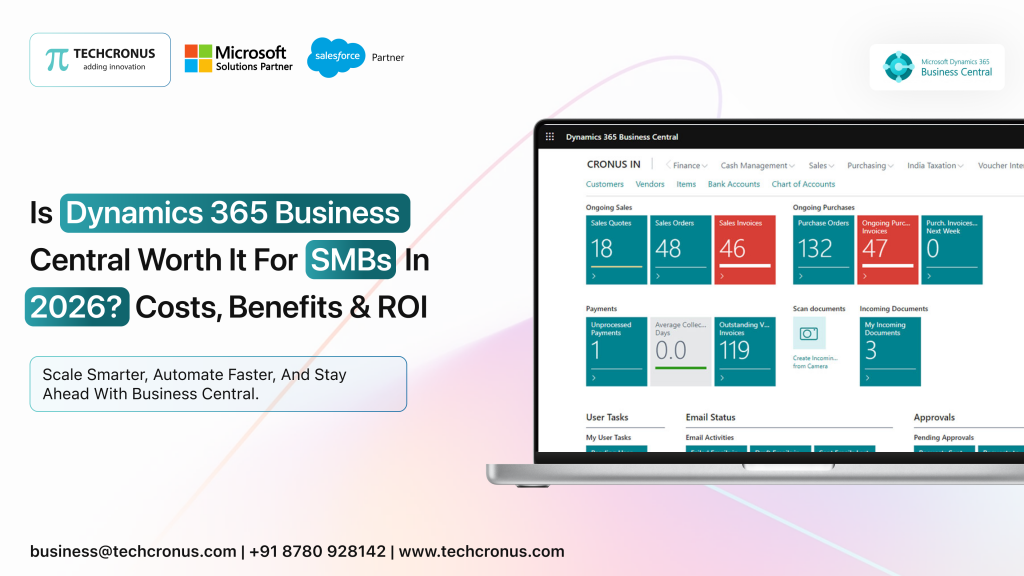Table of Contents
Customer relationships serve as the lifeblood of any company. If you sense that your business is missing a vital connection, consider CRM Trends technology as the defibrillator to revive and enhance your customer experience. As we stride into 2024, the landscape of CRM is evolving with groundbreaking innovations that have the potential to redefine how businesses attract, engage, and retain their customer base.
At its core, Customer Relationship Management (CRM) software consolidates all customer interactions across marketing, sales, and service channels onto a unified digital platform. This comprehensive approach enables businesses to monitor and cultivate customer relationships from the initial targeting phase throughout the entire lifecycle, ultimately allowing companies to extract maximum value from each client.
Remaining vigilant about the latest CRM developments is crucial for organizations looking to leverage cutting-edge features, gain a competitive edge, and showcase a commitment to highly personalized, predictive, and omnichannel customer experiences.
As we venture into 2024, approximately 50% of companies lacking comprehensive CRM implementations risk falling behind digitally savvy competitors. Therefore, staying updated on the most sought-after CRM trends for 2024 is imperative for businesses aiming to stay ahead in the dynamic landscape of customer relationship management.
CRM Trends to Keep an Eye on in 2024
Explore the key emerging CRM trends that companies must closely monitor during their 2024 planning cycles to avoid being left behind in the whirlwind of digital transformation.
1. AI and Predictive CRM:
Artificial intelligence (AI) and machine learning are already reshaping CRM capabilities, yet the full extent of their potential has only just begun to unfold. In 2024, we anticipate a widespread integration of AI automation and analytics across the entire spectrum of CRM functions.
Predictive Lead Scoring:
Real-time predictive lead scoring will empower sales teams to identify the most promising prospects, ensuring that outreach efforts align with contextual factors such as the buyer’s journey stage.
Dynamic Product Recommendations and Personalized Promotions:
Marketing efforts will benefit from dynamic product recommendations and personalized promotions, enhancing cross-sell opportunities and engaging customers on a more tailored level.
Chatbots with Natural Language Processing:
Chatbots equipped with natural language processing will handle increasingly complex customer service issues independently, providing accurate self-service experiences round-the-clock.
Efficiency through Segmentation:
Segregating customers into smaller, more defined groups based on multiple attributes will facilitate highly targeted messaging aligned with individual preferences and behaviors.
Proactive Personalization:
CRM platforms, utilizing AI capabilities, will proactively suggest the best next actions for users, making customer interactions feel more personalized and less reactive.
2. Automation and Workflows:
The landscape of marketing and sales workflows is set to undergo a significant transformation in 2024, driven by the integration of process automation, data triggers, and advanced analytics. CRM platforms will evolve to support highly customizable workflows tailored to intricate business scenarios.
Enhanced Lead Cultivation Strategies:
Intelligent lead nurturing protocols will facilitate automated multichannel drip campaigns, scalable to thousands of prospects based on granular attributes and engagement metrics. Deal progression playbooks will standardize coaching best practices within sales organizations, allowing for personalization to individual contact needs.
Event-Based Triggers and Sequences:
Event-based triggers linked to customer actions will initiate complex sequences, such as automatically scheduling sales follow-ups after demonstration requests. The incorporation of custom objects, variables, and intelligent routing rules will provide support for intricate decision branches, offering limitless flexibility in workflow design.
Next-Generation Automation:
While CRM systems have featured basic process builders for many years, the next generation of automation will introduce dynamic input configurations, complex logic handling, and platform extensibility. This transformation will position workflows as a strategic advantage for organizations in 2024, moving beyond being merely tactical tools.
3. Digital CX:
As of 2024, delivering cohesive customer experiences across digital channels has become a fundamental requirement. CRM systems will seamlessly integrate messaging, live chat, social media, and other engagement data into unified customer profiles.
Real-Time Interaction History and Hyper-Personalization:
Leveraging analytics and real-time interaction history across web, mobile, and messaging platforms, agents will be empowered to hyper-personalize engagements aligned with micro-moments. Recommendation engines will prompt next best actions, such as suggesting cross-sells or prompting channel switches as needed.
Customer Journey Analytics and AI Optimization:
Through customer journey analytics, CRM will assist organizations in optimizing experiences holistically across various platforms. With AI filling insight gaps, predicting customer needs, and automating routine tasks, human agents can focus on delivering emotional value during interactions.
Digital Body Language and Sentiment Analysis:
Digital body language analysis will enable sentiment detection, identifying high-risk touchpoints. Trend analysis will highlight the impact of platform experiences on conversion rates. Voice analytics will optimize Interactive Voice Response (IVR) systems and enhance contact center interactions.
4. Mobile CRM Adoption:
Mobile CRM is becoming non-negotiable for field sales and service teams in 2024. Optimized for smartphones and tablets, mobile CRM apps with user experiences comparable to top B2C apps will drive consistent adoption.
On-The-Go Features and Integration:
From notifications to guided selling tools, and analytics to automated capture of offline interactions, mobile CRM will provide on-ground teams with access to the same information and insights as their inside sales counterparts. Location integration will tag visits, determine nearby recommendations, prompt check-in requests, and auto-log calls.
Integrated Communication and Omnichannel Context:
Integrated communication will enable one-touch dialing, calendar scheduling, and email templates to streamline stakeholder interactions. Omnichannel context, including recent support tickets, social media posts, and product usage data, will prepare field reps. Tablet analytics will allow teams to analyze performance during pitches.
Offline Mode and Augmented Reality:
Offline mode will ensure constant access to customer data and app functionality even without connectivity. Augmented reality will overlay interactive information onto real-world environments. Mobile enablement will remain critical for training reps on products, sales skills, and service processes through microlearning apps.
5. Integration & Consolidation:
In 2024, best-of-breed point solutions are giving way to integrated CRM ecosystems capable of managing the entire customer lifecycle. Tight integrations between marketing automation, sales enablement, and customer service systems are erasing traditional departmental boundaries.
Expanded Native Feature Stacks and Specialty Functionality:
CRM platforms are expanding their native feature stacks while utilizing APIs and microservices to embed specialty functionalities such as chat, document collaboration, and payment processing. This approach reduces the need for separate tools, lowering licensing costs and streamlining data reconciliation efforts.
Common Data Models and Unified Admin Consoles:
Common data models, nomenclature, and objects across departments accelerate reporting and analysis. Unified admin consoles reduce IT overhead, and master workflows can trigger sequenced multi-team hand-offs.
Interoperability with Adjacent Enterprise Systems:
CRM systems are adopting standards-based frameworks for interoperability with adjacent enterprise systems, including ERP, e-commerce, and business intelligence. Shared metadata layers connect systems at the data level, and packaged connectors facilitate linking user interfaces and workflows.
Seamless Context and Event Exchange:
The CRM ecosystem of the future goes beyond breaking internal silos; it seamlessly exchanges context and events with external systems, creating an integrated CX stack that benefits customer-facing teams.
6. CRM & IoT Technologies:
CRM systems are increasingly integrating with IoT (Internet of Things) technologies, providing businesses with deeper insights into customer behavior and preferences.
Connected Products and Assets:
IoT enables companies to connect products, equipment, and assets to collect data and communicate. For instance, HVAC systems at customer sites can be connected to monitor usage, schedule preventive maintenance, and gather data for personalized offerings, feeding into the CRM system.
Predictive Analytics:
By combining IoT sensor data with CRM data, businesses can apply predictive analytics to forecast equipment failures, identify future sales opportunities, assess churn risk, and recognize trends impacting customer experience, enabling proactive service and tailored recommendations.
Contextualized Recommendations:
CRM systems, armed with customer identity and context from IoT devices, can provide highly personalized and timely recommendations through smart products. For example, a connected consumer appliance can suggest replacement parts or accessories based on actual usage patterns.
Integration with Voice Assistants:
IoT voice assistants like Alexa or Google Home are being linked to CRM platforms, offering an integrated and conversational customer experience for queries, support requests, transactions, and more.
Smart Spaces:
Facial recognition, mobile location sensing, and IoT sensors enable smart retail spaces. Customers can be recognized across visits, providing personalized attention, preferred shopping experiences, and customized promotions.
New Market Additions in CRM:
CRM solutions have undergone rapid evolution, transcending their origins in sales force and contact center management. Modern CRM suites now encompass advanced analytics, automation, and enhanced customer engagement, ushering in several key market additions.
1. Modernizing Platforms and Architecture:
The emergence of cloud technology has been a pivotal turning point. The acceleration of CRM migration to the cloud has brought about flexibility, speed, and usage-based pricing, fostering adoption across a broader spectrum of customer-facing roles.
Affordable subscription plans have democratized access to enterprise-grade capabilities for SMBs. Integrations with complementary apps via APIs have expanded the scope of CRM functionalities. Cloud economics have also catalyzed innovation in mobility, analytics, and AI within CRM.
2. Expanding Capabilities and Integration:
Customer analytics, powered by machine learning, is uncovering predictive insights from CRM data. This includes forecasting churn risk, modeling purchase behavior, and scoring leads. Sentiment analysis measures customer lifetime value and gauges experience metrics through voice and text.
Tools like “next best action” make real-time personalized decisions. Enhanced information access is facilitated through dashboarding, operational reports, and data visualization.
3. Shift towards No-Code Application Development and Automation:
There’s a pronounced shift towards no-code application development, with workflow automation and predictive recommendations being natively built into CRM platforms. This simplifies change management for business users through configurations, eliminating the need for expensive coding.
Integration of multi-channel campaign symmetry, email marketing, etc., enhances engagement. As customers engage via mobile, social, IoT channels, CRM now seamlessly ties into marketing, services, e-commerce, and community platforms. Emerging technologies like voice, AR/VR, and conversational interfaces are becoming integral.
4. Data Management Platforms for Governance:
With increasing data quality and usage intensity, Data Management Platforms are addressing governance needs. The connected CRM is undoubtedly the way forward, ensuring a holistic and integrated approach to customer relationship management.
Why will it be important to balance out sophistication and a centralized view of the customers in CRM?
Balancing sophistication and maintaining a centralized view of customers in CRM systems is becoming increasingly crucial for businesses. This necessitates a strategic technological approach to enhance customer experiences and drive business growth.
The importance of having a single, unified view of each customer throughout their entire journey cannot be overstated. With customers engaging across numerous touchpoints, both online and offline, their data and interactions become fragmented across various channels such as sales, marketing, e-commerce, and service.
Consolidating this information into comprehensive 360-degree customer profiles provides the essential ‘single source of truth,’ enabling a genuine understanding of customer behavior, preferences, and sentiment.
However, merely having access to integrated customer data is insufficient. Companies must apply intelligence to derive critical insights that drive precision targeting, hyper-personalization, and predictive recommendations. This necessitates sophisticated techniques like machine learning, predictive analytics, sentiment analysis, etc. The democratization of packaged AI through ready-to-use CRM capabilities for various front and back-office functions is a notable trend.
Nevertheless, an over-reliance on black box algorithms without context poses the risk of incorrect and biased decisions that may frustrate customers. The human aspect remains crucial. Holistic customer profiles enable the application of intelligence in a contextualized manner. AI models also require transparency for human supervision.
Therefore, it is evident that sophistication and a consolidated understanding of customers must evolve together for next-gen CRM platforms. The presence of one without the other severely limits potential.
Companies that can architect smart and centralized CRM solutions will gain a sharp competitive edge through elevated customer experiences. The ultimate goal should be individualized, consistent, and relevant experiences across moments, powered by data and intelligence.
Implementation Guide for Successful Adoption of CRM Trends:
1. Audit & Assess:
Begin by cataloging current CRM uses, identifying gaps, and understanding pain points through stakeholder interviews and workflow analyses. Prioritize enhancement areas based on alignment with business goals.
2. Evaluate Upgrades:
Assess the new functionality of your current platform version or explore competitor offerings to validate fit. Cloud migration provides frequent update options, ensuring your CRM stays aligned with evolving business needs.
3. Phase Rollouts:
Adopt an agile approach when activating advanced tools. Pilot functionality with test groups before implementing organization-wide. This phased rollout allows for refinement based on real-world usage.
4. Proactive Training:
Proactively upskill teams on updates through labs, demos, and online learning instead of relying solely on passive emails. Motivating teams through engaging training methods is essential for successful adoption.
5. Simplify Navigation:
Counter feature overload by organizing functions into simplified profiles, menus, and workflows tailored to user roles. Streamlining navigation enhances user experience and encourages efficient utilization of CRM capabilities.
6. Measure ROI:
Leverage updated reporting dashboards to showcase hard metrics on adoption and business impact. Continually fine-tune targeting and workflows based on insights derived from these metrics. Regularly measure the return on investment to ensure ongoing success.
Conclusion:
While innovations such as predictive intelligence, integrated workflows across customer journeys, and digitally empowered field teams may appear cutting-edge, CRM is once again transforming potential into profit, with ROI-rich capabilities becoming essential table stakes.
However, the power of these advancements brings forth complexity. As outlined in this blog, successfully navigating the next CRM wave demands a balanced adoption of innovative features, coupled with seamless change management and guided learning to fuel user motivation.
This is where a consulting partner, such as Techcronus, excels – assessing your organizational CRM maturity, crafting adaptive technology roadmaps aligned with identified priorities, addressing adoption challenges through specialized learning programs, and supporting long-term value realization through expert implementation and ongoing optimization.
Don’t jeopardize revenue goals or customer satisfaction with inadequate systems. Contact Techcronus to future-proof your CRM today and seize the first-mover advantage in 2024! Our CRM specialists are eager to hear your vision and commence delivering on it.
Frequently Asked Questions:
1. What are the emerging technologies influencing CRM trends in 2024?
In 2024, emerging technologies such as artificial intelligence (AI), machine learning (ML), and blockchain will significantly influence CRM trends. AI and ML enhance customer insights, enabling predictive analytics for personalized customer experiences. Blockchain ensures secure and transparent transactions, boosting trust in customer relationships.
2. How is the customer experience evolving with CRM in 2024?
Customer experience in 2024 is evolving with a focus on hyper-personalization and omnichannel engagement. CRM systems leverage advanced analytics to understand customer preferences, allowing organizations to deliver tailored interactions across various channels, including social media, chat, and voice, to enhance overall customer satisfaction.
3. What role does data privacy play in CRM trends for 2024?
Data privacy is a critical aspect of CRM trends in 2024. With increasing regulations and customer concerns about data security, organizations are prioritizing robust data protection measures. This includes adopting technologies like differential privacy and implementing strict compliance measures to ensure customer data is handled responsibly.
4. How are mobile CRM applications evolving in 2024?
In 2024, mobile CRM applications are evolving to offer seamless user experiences and enhanced functionality. With the integration of augmented reality (AR) and virtual reality (VR), organizations can provide innovative ways for users to interact with their CRM systems. Mobile CRM is also becoming more intuitive, allowing users to access real-time data and perform tasks on the go.
5. What role does sustainability play in CRM strategies for 2024?
Sustainability is a key consideration in CRM strategies for 2024. Organizations are increasingly integrating environmentally responsible practices into their customer relationship management. This includes adopting eco-friendly technologies, reducing carbon footprints, and aligning CRM strategies with sustainable business practices to meet the growing demand for socially responsible business operations.






















